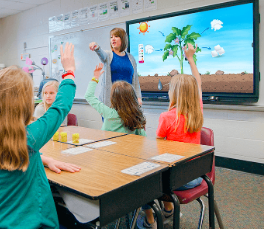Education is evolving, and one of the most discussed changes today is the shift from traditional classrooms to digital classrooms. Both approaches aim to support learning, but they offer very different experiences for students, teachers, and families. Understanding these differences helps learners and educators choose what works best for them.
What is a Traditional Classroom?
A traditional classroom is the familiar setting where teachers and students gather in person. Lessons happen face-to-face, usually with textbooks, chalkboards or whiteboards, and printed handouts. Interaction is direct, and teachers can instantly see how students respond to lessons. The traditional model also provides social interaction, structured routines, and a sense of community that many learners value.
What is a Digital Classroom?
A digital classroom uses technology to bring learning online. Instead of physical desks and boards, students connect through computers, tablets, or smartphones. Lessons may include live video sessions, recorded lectures, online assignments, and interactive tools like quizzes, discussion boards, or virtual labs. Digital classrooms allow learning to happen anywhere with an internet connection, giving students more flexibility and accessibility.
Key Differences Between the Two
Location and Flexibility
Traditional classrooms require students to be physically present.
Digital classrooms allow learners to access lessons from home or on the go.
Resources and Tools
Traditional classrooms rely on printed materials and face-to-face activities.
Digital classrooms offer e-books, multimedia presentations, and interactive apps.
Interaction
In traditional settings, interaction is personal and immediate.
Digital classrooms may use chat boxes, forums, or video calls for communication, which can reach beyond geographical limits.
Assessment
Traditional classrooms often use written exams and in-class participation.
Digital classrooms allow online quizzes, project submissions, and instant feedback.
Strengths of Each Approach
Traditional Classrooms: Encourage direct social bonding, structured learning, and group activities that build teamwork.
Digital Classrooms: Provide flexibility, a wider range of resources, and opportunities for self-paced learning.
Finding the Right Balance
Many schools and universities now use a blended model, combining the strengths of both traditional and digital classrooms. Students might attend classes on campus while also completing online assignments or joining virtual discussions. This balance helps learners enjoy face-to-face interaction while also taking advantage of digital tools.
Conclusion
Both digital and traditional classrooms play important roles in modern education. While traditional classrooms create strong personal connections, digital classrooms expand access and flexibility. By understanding the strengths of each, educators and learners can make choices that best fit their goals, lifestyle, and learning preferences.














